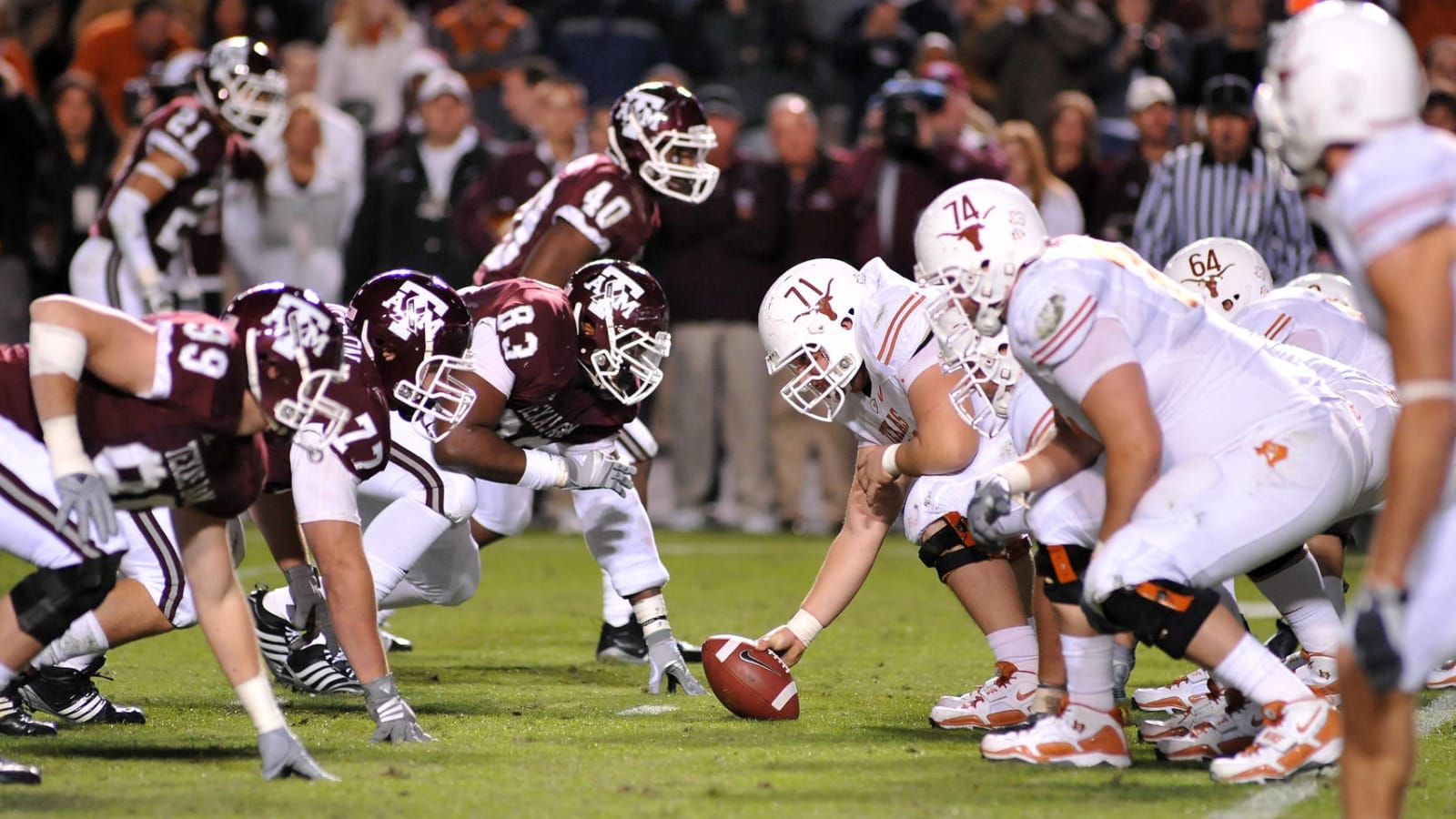
Why Texas-Texas A&M, other dormant rivalries must make a comeback
Eight years ago, a kicker named Justin Tucker made a 40-yard field goal as time expired to give Texas a 27-25 win over Texas A&M. That was the last gasp of an iconic rivalry -- A&M bolted for the Southeastern Conference in 2012, Texas remained in the Big 12, and the schools have not played each other since.
There are so many things about college football that make no sense that I cannot begin to list them all in this space. But the cessation of the longtime Texas-Texas A&M rivalry in 2011 because of logistics and petty jealousies is pretty high on the list.
The good news? Last Friday, Texas governor Greg Abbott revealed that he was speaking to leadership of both schools about scheduling a two-game series. The bad news? We don’t know if that future will ever arrive. If it does, it will likely be in the distant future because the one non-conference Power Five game that each school plays each season is slotted for nearly a decade.
And so a rivalry that has no good reason for not existing is on hold.
Eight years on, many of the players in the last Texas-Texas A&M game -- including Tucker -- are NFL veterans; eight years later, Texas coach Mack Brown has retired, taken a TV job, and become a head coach at another university. The world moves on without Texas-Texas A&M, and we are all the poorer for it.
These teams are so culturally intertwined that each mentions the other in their respective fight songs. Before the cessation of the rivalry, they had played each other virtually every year since the tail end of the 19th century.
Perhaps what’s craziest about all this is there is a natural opening here. College football is at yet another turning point as the Playoff Era matures, and those changes make it even more attractive for old rivalries like Texas-Texas A&M to be renewed. As CBS’s Dennis Dodd recently reported, the anticipated expansion of the playoff bracket --combined with dwindling attendance at even major Power Five programs -- has led a number of schools to bolster their non-conference schedules.
Would they be doing so if the College Football Playoff committee, in choosing its participants, didn’t place a premium on strength of schedule? Not a chance, admitted Georgia athletic director Greg McGarity.
This is what the playoff was designed to do: Force teams to balance their early-season games against the Kent States of the world with real, live football games, meant to test their program and attract fans like a UMass never could. And that’s why Texas and Texas A&M would be foolish to limit themselves to a single non-conference Power Five game per year. Instead, they should focus on strengthening their resumes any way they can to attract a new generation of fans and to qualify for the playoff.
There’s no reason for great programs to be playing multiple bad schools. And there’s no reason for old rivalries, shaken up by the era of conference realignment, to lay dormant. I speak not only of Texas-Texas A&M, but Pitt-Penn State, Oklahoma-Nebraska and a handful of others that are now only played sporadically, if at all.
And if these teams can’t get over their egos enough to schedule those games themselves -- if even the governor of Texas can’t get Texas and Texas A&M to come together again -- then perhaps they should adopt an idea a Power Five athletic department official told me was at least being discussed in college football circles last year. Employ a “master scheduler” who sets things up each fall, the way the NFL does it. Really, this shouldn’t be hard, except that college football has a way of making everything far more difficult than it should be.
More must-reads:
- Protector of his realm, Alabama's Nick Saban reaches a crossroads
- Why alcohol sales at SEC games may be sign college football is growing up
- The 'College football rivalry trophies' quiz
Breaking News
Customize Your Newsletter
 +
+
Get the latest news and rumors, customized to your favorite sports and teams. Emailed daily. Always free!

